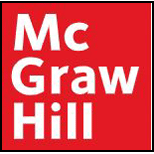
Assume the par
Harold Reese must choose between two bonds: Bond X pays
a. Compute the current yield on both bonds.
b. Which bond should he select based on your answer to part a?
c. A drawback of current yield is that it does not consider the total life of the bond. For example, the yield to maturity on Bond X is 11.21 percent. What is the yield to maturity on Bond Z?
d. Has your answer changed between parts b and c of this question?
Want to see the full answer?
Check out a sample textbook solution
Chapter 16 Solutions
FOUND.OF FINANCIAL MANAGEMENT-ACCESS
- What are asset type and the useful lives for a company mean?arrow_forwardWhat was the amount of cash (and cash equivalents) that Airbnb reported for the year of 2024? State the amounts for each item you included in this number. How much working capital does Airbnb have for the year 2024? State the components of working capital and calculations. What is the amount of the total assets that Airbnb reported for the year of 2024 and list the assets?arrow_forwardWhat are Independent Auditors?What is a normal day for a Independent Auditor? What are their responsibilities?arrow_forward
- What was the amount of revenue that Airbnb reported for 2024? Did the revenue grow over the prior year of 2023? What was the dollar and the percentage increase or decrease?arrow_forwardAn annuity provides payments at the end of each two-year period for twenty years. It pays $1,000 at the end of the first period and increases the payment by $1,000 in each subsequent period, so that at the end of the tenth period it pays $10,000. Given a 2% nominal annual interest rate compounded semiannually, determine in which of the following ranges is the present value of this annuity. please use tvm if neededIarrow_forwardA. What is the amount of the annuity purchase required if you wish to receive a fixed payment of $200,000 for 20 years? Assume that the annuity will earn 10 percent per year.B. Calculate the annual cash flows (annuity payments) from a fixed-payment annuity if the present value of the 20-year annuity is $1 million and the annuity earns a guaranteed annual return of 10 percent. The payments are to begin at the end of the current year.C. Calculate the annual cash flows (annuity payments) from a fixed-payment annuity if the present value of the 20-year annuity is $1 million and the annuity earns a guaranteed annual return of 10 percent. The payments are to begin at the end of five years. I need help solving question C on a financial calculator.arrow_forward
- John wants to buy a property for $105,000 and wants an 80 percent loan for $84,000. A lenderindicates that a fully amortizing loan can be obtained for 30 years (360 months) at 6 percentinterest; however, a loan fee of $3,500 will also be necessary for John to obtain the loan.a. How much will the lender actually disburse?b. What is the APR for the borrower, assuming that the mortgage is paid off after 30 years (fullterm)?c. If John pays off the loan after five years, what is the effective interest rate? Why is it differ-ent from the effective interest rate in (b)?d. Assume the lender also imposes a prepayment penalty of 2 percent of the outstanding loanbalance if the loan is repaid within eight years of closing. If John repays the loan after fiveyears with the prepayment penalty, what is the effective interest rate?arrow_forwardIt is now January 1. You plan to make a total of 5 deposits of $500 each, one every 6 months, with the first payment being made today. The bank pays a nominal interest rate of 14% but uses semiannual compounding. You plan to leave the money in the bank for 10 years. Round your answers to the nearest cent. 1. How much will be in your account after 10 years? 2. You must make a payment of $1,280.02 in 10 years. To get the money for this payment, you will make five equal deposits, beginning today and for the following 4 quarters, in a bank that pays a nominal interest rate of 14% with quarterly compounding. How large must each of the five payments be?arrow_forwardDon't used hand raiting and don't used Ai solutionarrow_forward
- Don't used Ai solution and don't used hand raitingarrow_forward(d) Estimate the value of a share of Cisco common stock using the discounted cash flow (DCF) model as of July 27, 2019 using the following assumptions Assumptions Discount rate (WACC) Common shares outstanding 7.60% 5,029.00 million Net nonoperating obligations (NNO) $(8,747) million NNO is negative, which means that Cisco has net nonoperating investments CSCO ($ millions) DCF Model Reported 2019 Forecast Horizon 2020 Est. 2021 Est. 2022 Est. 2023 Est. Terminal Period Increase in NOA FCFF (NOPAT - Increase in NOA) $ 1241 1303 1368 10673 11207 11767 1437 $ 12354 302 ✓ Present value of horizon FCFF 9918 9679 9445 ✔ 0 × Cum. present value of horizon FCFF $ 0 × Present value of terminal FCFF 0 ☑ Total firm value 0 ☑ NNO -8747 ✓ Firm equity value $ 0 ☑ Shares outstanding (millions) 5029 Stock price per share $ 40.05arrow_forwardDon't used hand raiting and don't used Ai solutionarrow_forward
 Excel Applications for Accounting PrinciplesAccountingISBN:9781111581565Author:Gaylord N. SmithPublisher:Cengage Learning
Excel Applications for Accounting PrinciplesAccountingISBN:9781111581565Author:Gaylord N. SmithPublisher:Cengage Learning
